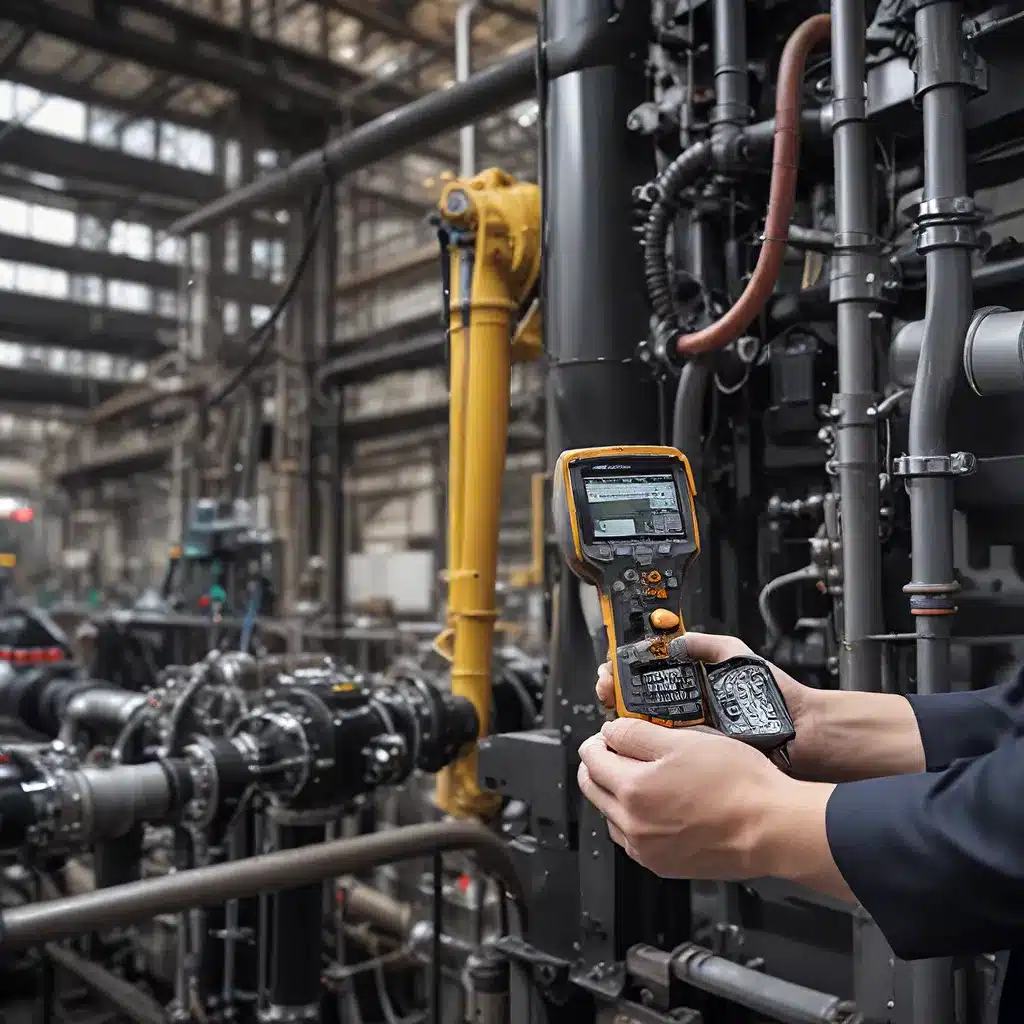
In the rapidly evolving world of sensor networks and the Internet of Things (IoT), predictive maintenance has emerged as a game-changing strategy for industrial operations. By leveraging the power of sensor data and advanced analytics, organizations can now proactively manage the health and performance of their critical assets, ultimately optimizing their lifecycle and enhancing overall operational efficiency.
The Rise of Sensor-Driven Predictive Maintenance
The traditional approach to asset maintenance has often been reactive, relying on scheduled or time-based interventions. However, this approach can be costly, inefficient, and potentially compromise asset reliability. Sensor-driven predictive maintenance, on the other hand, offers a more proactive and data-driven alternative.
By strategically placing sensors throughout industrial environments, organizations can gather real-time data on the condition and performance of their assets. This data can then be analyzed using sophisticated algorithms and machine learning techniques to predict potential failures and identify optimal maintenance schedules.
IBM Maximo, for example, provides a comprehensive suite of tools that enables asset health monitoring and predictive maintenance capabilities. With Maximo, organizations can leverage IoT data from asset sensors, weather data, and maintenance records to gain a holistic understanding of their asset health and make informed decisions about maintenance and replacement planning.
Unlocking the Benefits of Sensor-Driven Predictive Maintenance
The adoption of sensor-driven predictive maintenance strategies can deliver a range of benefits to industrial organizations, including:
1. Improved Asset Reliability and Availability
By using sensor data and predictive analytics to identify potential issues before they occur, organizations can take proactive measures to address them, ultimately reducing the likelihood of unplanned downtime and improving asset availability.
2. Optimized Maintenance Schedules
Sensor-driven predictive maintenance allows organizations to transition from time-based to condition-based maintenance. By monitoring asset health in real-time, maintenance can be scheduled based on actual need, rather than arbitrary intervals, leading to more efficient use of resources and reduced maintenance costs.
3. Extended Asset Lifecycle
By catching and addressing issues early, sensor-driven predictive maintenance can extend the useful life of industrial assets, postponing the need for costly replacements and maximizing the return on investment (ROI).
4. Improved Decision-Making
The wealth of data generated by sensor networks can provide valuable insights into asset performance, operational patterns, and potential areas for optimization. These insights can inform strategic decision-making and help organizations prioritize maintenance and replacement activities based on data-driven recommendations.
Implementing Sensor-Driven Predictive Maintenance
Successful implementation of sensor-driven predictive maintenance requires a holistic approach that considers the technological, organizational, and operational aspects of the process.
Sensor Network Design and Integration
Deploying a robust sensor network is the foundation of effective predictive maintenance. This involves carefully selecting and positioning sensors to capture relevant data, ensuring seamless integration with existing systems, and leveraging edge computing capabilities to process data at the source.
Data Analytics and Predictive Modeling
Leveraging advanced data analytics and machine learning techniques is crucial for transforming sensor data into actionable insights. Organizations should invest in developing predictive models that can accurately forecast asset failures, recommend maintenance schedules, and provide visibility into the overall health of their industrial assets.
Organizational Alignment and Change Management
Implementing sensor-driven predictive maintenance often requires a shift in organizational culture and processes. Aligning stakeholders, providing training and support, and establishing clear governance frameworks are essential to ensure the successful adoption and long-term sustainability of these initiatives.
Cybersecurity and Data Privacy
As sensor networks and IoT technologies become increasingly integrated into industrial operations, cybersecurity and data privacy considerations are paramount. Organizations must implement robust security measures, such as secure data protocols, access controls, and data encryption, to protect their assets and maintain the integrity of their operational data.
Case Study: Optimizing Asset Performance in the Energy Sector
One notable example of the impact of sensor-driven predictive maintenance is in the energy sector. IBM Maximo has helped energy companies improve the stability of their power grids by leveraging IoT data, analytics, and AI-driven predictive models.
By integrating sensor data from critical equipment and assets, energy companies can identify potential issues and plan maintenance activities more effectively. This allows them to increase asset availability, reduce unplanned downtime, and ultimately improve the overall reliability of their energy infrastructure.
The Future of Sensor-Driven Predictive Maintenance
As the IoT landscape continues to evolve, the role of sensor-driven predictive maintenance is poised to become even more prominent. Emerging trends in this space include:
-
Increased Sensor Deployment: The continued proliferation of low-cost, high-performance sensors will enable organizations to gather more comprehensive data on their assets, leading to more accurate and reliable predictive models.
-
Advancements in Edge Computing: The ability to process and analyze sensor data at the edge, closer to the source, will enhance real-time decision-making and reduce the burden on centralized computing resources.
-
Integration with Digital Twins: The integration of sensor data with digital twin technologies will provide a virtual representation of physical assets, enabling more sophisticated simulation, optimization, and predictive maintenance strategies.
-
Predictive Maintenance as a Service: The emergence of predictive maintenance as a service (PMaaS) models will offer organizations a scalable and cost-effective way to leverage the benefits of sensor-driven predictive maintenance without the need for extensive in-house expertise and infrastructure.
As the sensor networks and IoT ecosystem continues to evolve, the adoption of sensor-driven predictive maintenance will become increasingly crucial for industrial organizations seeking to optimize asset performance, enhance operational efficiency, and gain a competitive edge in their respective markets.
By embracing these innovative technologies and strategies, companies can unlock a new era of proactive, data-driven asset management, driving sustainable growth and ensuring the reliability and resilience of their industrial operations.
To learn more about how your organization can benefit from sensor-driven predictive maintenance, visit sensor-networks.org and explore the latest advancements in this transformative field.